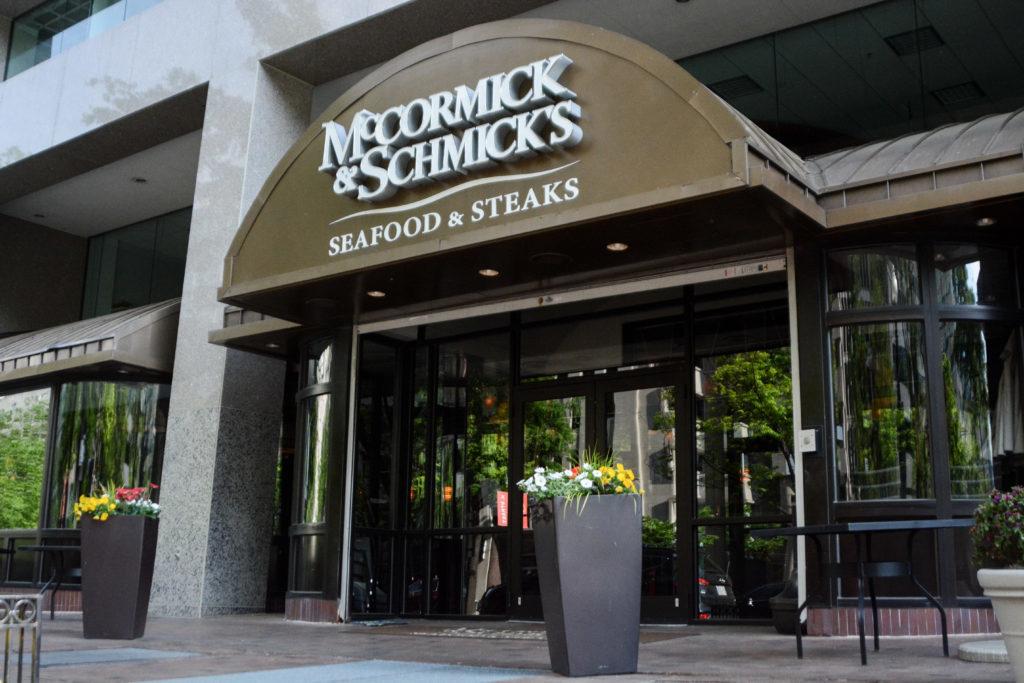Restaurant-goers might not be getting what they pay for when they order seafood from D.C. restaurants, according to a new study by GW researchers.
The study, released April 25, tested seafood from large chain restaurants across the District and found that one-third of the dishes examined feature a different kind of fish than what is written on the menu. Researchers found the restaurants were instead using cheaper fish varieties in their dishes.
Twelve seafood dishes from six different upscale restaurants were tested, including Bobby Vans Steakhouse, Joe’s Seafood, Prime Steak & Stone Crab Gordon Biersch, The Oceanaire Seafood Room, Legal Sea Foods and McCormick and Schmick’s. Researchers ordered seafood dishes from the restaurants and took half of each dish in a to-go box to get a sample for the lab.
Keith Crandall, a professor of biology at GW who led the review, said most of the mismatches resulted from restaurants using cheaper seafood varieties as a substitute for the more expensive types listed on the menus.
“Somebody’s trying to pull a fast one on somebody and swap out the samples to substitute a cheaper seafood in place of something that’s more expensive and charge the consumer a higher rate, then pocket the difference,” he said.
Crandall said restaurants may also misrepresent their menu by using endangered fish species in their dishes while advertising other species on the menu or swapping farm-raised fish for more expensive wild-caught fish.
One restaurant claimed to serve wild-caught shrimp on the menu, but researchers found the shrimp in the dish was of the farm-raised variety. Several of the restaurants used lower-quality tuna varieties than what was claimed on their menus, according to the study.
Migliaccio & Rathod LLP, a D.C.-based law firm, funded the study.
Jason Rathod, an attorney at the firm, said a recent change to D.C. law allows restaurant customers to have their food tested to verify if the item matches what is advertised on the menu. If there is a mismatch, then the customer can bring the restaurant to court, Rathod said.
He said the firm bankrolled the study to examine how frequently restaurants were misrepresenting their menus and found Crandall after searching local experts with experience in DNA barcoding.
Rathod said based on the study, no legal action would be taken against the restaurants because the violations weren’t egregious enough to warrant a lawsuit.
“There isn’t really a strong misrepresentation here,” he said. “Based on that we didn’t go any further, but if they had found some egregious examples of substitution, misrepresentation in the seafood, then a consumer would have been able to go out and get samples, do testing and bring a lawsuit.”
Two of Crandall’s former doctoral students, David Stern and Eduardo Castro-Nallar, helped with the study. They each ate at three of the six restaurants that were studied.
Castro-Nallar, an assistant professor at Andrés Bello National University in Chile, said he and Crandall have stayed in touch since Castro-Nallar finished his doctorate in GW’s biology department and Crandall thought that Castro-Nallar’s previous experience in DNA barcoding would benefit the study.
“Keith contacted us and said, ‘Hey, do you guys want to participate? Do you want to eat for free in fancy restaurants?’” Castro-Nallar said.
He said researchers extracted a small sample from the meal after leaving the restaurant and put it in ethanol to preserve for the lab.
In the lab, the team took DNA from each sample and compared it to a sample from the fish variety that was actually advertised on the menu, according to the study.
Castro-Nallar said the method of DNA testing in this study was originally used to measure the decline of species in a specific ecosystem. Scientists used the DNA of plants and animals living in a certain region and compared it to the DNA of species that had lived there in the past.
“Here you have a perfect example of using something that was originally developed for something else. How powerful can it be for day-to-day things like food identification,” he said. “That’s probably what I liked the best about this study.”
Callie Schiffman contributed reporting.




